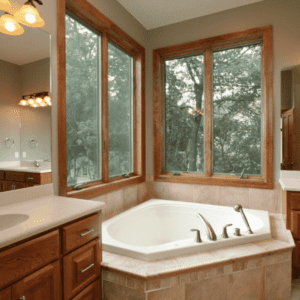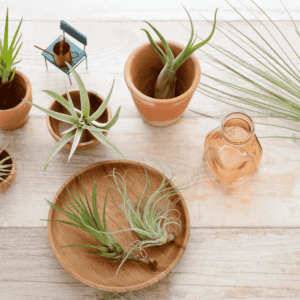Changing your kitchen cabinets can give your home an instant facelift, but you don’t need to call in professionals to accomplish this task. In fact, refinishing kitchen cabinets is actually a fairly simple DIY project when you have the right tools and know the right steps to follow, which we have outlined below in our step-by-step guide on how to paint kitchen cabinets (DIY).
Step 1: Clean with soapy water to remove any dirt
Start by cleaning the cabinet doors with a sponge, soapy water, and an old toothbrush. Clean any dirt or grime off the doors by scrubbing with the toothbrush in a circular motion, then rinse off the soap with a wet cloth or paper towel. Allow them to dry completely before you move on.
Step 2: Sand to make the surface run smooth for painting
Sanding is a necessary step in the painting process because it removes the original finish and creates a smooth surface for the new paint. Before sanding, use a damp cloth to remove any dust or dirt from the cabinet. Then, using an electric sander or palm sander, lightly sand each piece until all of the original finish has been removed and the cabinet is smooth. Once you have finished sanding, wipe down the cabinet with a clean rag. It’s important not to over-sand your cabinets or you risk removing too much of the wood grain.
Step 3: Prime to create a stable surface for the paint to lock into
Wipe the surface of the cabinet down with a damp cloth and dry it off. Paint primer on the surface and let it dry. If you are painting a dark color over a light one, you will need to apply two coats of primer before applying the new coat of paint. If necessary repaint the kitchen cabinet with another layer of primer.
Primer is like an insurance policy for your paint job because if you don’t prime first, your new layer may peel or chip away from the old one. Primer also protects your newly painted finish from scuffs and scrapes that can occur during use by providing a protective coating to your work-in-progress. It’s important to keep your project out of reach while it dries so as not to risk messing up the freshly primed surface. When the primer has dried, move on to step four: edging!
Step: 4 Edging to give it a professional touch
A great time to do this is right after the primer has dried, but feel free to wait until the whole cabinet project is complete before going back and finishing it up. To edge your freshly primed surfaces, tape around the edges of all doors and drawers with painter’s tape in order to protect them from being sprayed accidentally. You want this edge to be perfectly clean because otherwise, you’ll see sharp lines where it doesn’t match your finished paint color. Now, move on to the next step: paint the kitchen cabinet!
Also Read: Tips for Planning a Home Remodeling Project

Step 5: Paint your cabinet
When you are ready to start kitchen cabinets painting, make sure you have a clean surface. The smoother the surface is, the better your end result will be. If necessary, use a sanding block or an electric sander for this step. Then apply at least three coats of latex paint in your chosen color and let each coat dry for about an hour before moving on to the next one. Use a putty knife or painter’s tape to cover up any areas you don’t want to be painted such as the trim work around your doors and windows. Clean off any dust with a damp cloth before finishing up with some clear protective spray sealant to help protect your new look from wear and tear.
Paint is typically applied with a paintbrush, roller, or paint sprayer. For large projects, it’s best to use a paintbrush and paint tray. For more precise work, you may find the roller or a spray to be more convenient. To ensure the cabinet is evenly coated with paint, roll on the liquid from side to side in long strokes. Finally, let the cabinet dry for about 30 minutes before moving it back into place. If there are any drips or marks that need touching up, go over them with the same paint color using a small-bristled brush. The last thing you want is an unsightly mess!
Step 6: Finish off your DIY
After you have applied three coats of paint, let the cabinet dry for at least 12 hours. Then, add a thin coat of wax to seal in the finish and create a semi-gloss finish that will be resistant to water and other household chemicals. The process is pretty simple and can take around four hours from start to finish. So if you’re tired of looking at those outdated cabinets, then give this a try!
FAQs about Painting Kitchen Cabinets
Yes! You should sand cabinets before painting. This will help to create a smooth surface for the paint to adhere to.
There are a few different types of paint that can be used on kitchen cabinets, but the most common type is latex paint.
Some people prefer to spray paint their kitchen cabinets for a more even and consistent finish, while others prefer to hand paint them for a more personal touch. Ultimately, it is up to the individual to decide which method works best for them and their kitchen cabinets.




